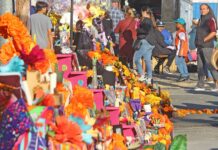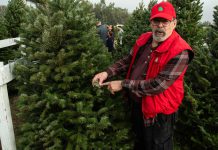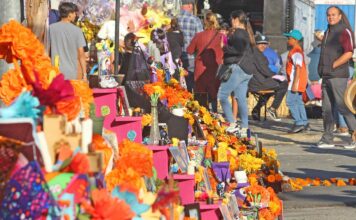By Sebastian Montes
Special to South Valley Newspapers
Bark cankers oozing sap, a swarm of beetles chewing on bark, a
fungus that decays bark
– all nightmarish symptoms of sudden oak death, a
still-mysterious tree disease that has wreaked havoc on California
populations of oak in nurseries and backyards from Mendocino County
down to Big Sur.
By Sebastian Montes
Special to South Valley Newspapers
Bark cankers oozing sap, a swarm of beetles chewing on bark, a fungus that decays bark – all nightmarish symptoms of sudden oak death, a still-mysterious tree disease that has wreaked havoc on California populations of oak in nurseries and backyards from Mendocino County down to Big Sur.
The culprit is Phytophthora ramorum, a devilish little pathogen that has killed tens of thousands of oak trees throughout the country since it first appeared in 1995. There have been confirmed outbreaks in 53 locales in California alone, and county, state and national agencies have issued quarantines and authored legislation to prevent an epidemic.
The first difficulty is that symptoms of the disease are too difficult to distinguish from other arboreal diseases – laboratory tests are the only way to be sure. Second, scientists are still unsure as to exactly how P. ramorum spreads – all they know is that it spreads easily through infected roots, leaves and other plant material.
The good news is that sudden oak death is hardly as fearsome as it might at first seem. While there is no cure or chemical treatment, it is not necessary to dispose of an infected tree – a tree with the disease can thrive green and otherwise healthy for years. Not until the beetles and wood-decaying fungi take hold, though, must infected trees be uprooted and burned.
The California Oak Mortality Task Force recommends four steps to determining if your oak is vulnerable to sudden oak death. Remember that contacting a certified arborist is the only way to be sure.
Step 1: Determine if your species of oak is among those so far on the sudden oak death list: coast live oak, California black oak, Shreve oak and especially tanoak, which has been the hardest hit and is the most likely to die if infected.
Step 2: Santa Clara is among the 13 counties with confirmed outbreaks of the disease. Contact the UC Cooperative Extension or the office of the Santa Clara County Agricultural Commissioner. COMTF also maintains detailed maps on its Web site www.suddenoakdeath.org.
Step 3: The disease causes oaks to “bleed” or ooze a dark reddish-brown sap from lesions in the trunk called cankers, usually less than 10 feet from the ground. New twig growths and leaf sprouts on tanoaks will tend to lose their color and sag. Keep your eye out for attacking beetles and wood-decaying fungi.
Step 4: Other trees and shrubs can carry P. ramorum without showing symptoms. Check for nearby bay, maple and huckleberry trees, as well as rhododendrons and camellias.
Remember, any material from an infected tree can carry P. ramorum by wind, driven rain and the flow of water. Human and animal activity is another accomplice, so scrub your tires, shoes and little Fido’s paws when you get back from those seaside excursions.













